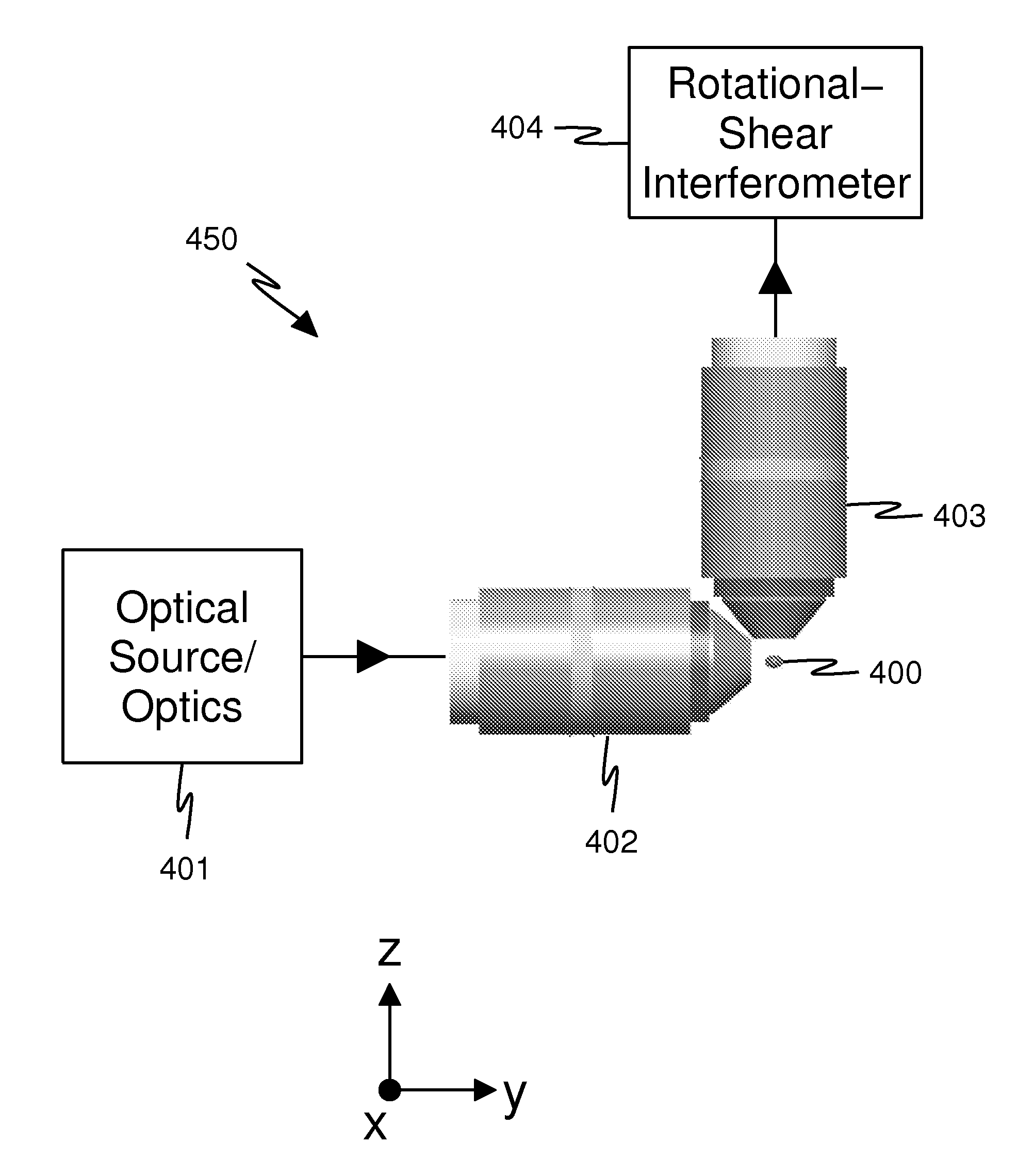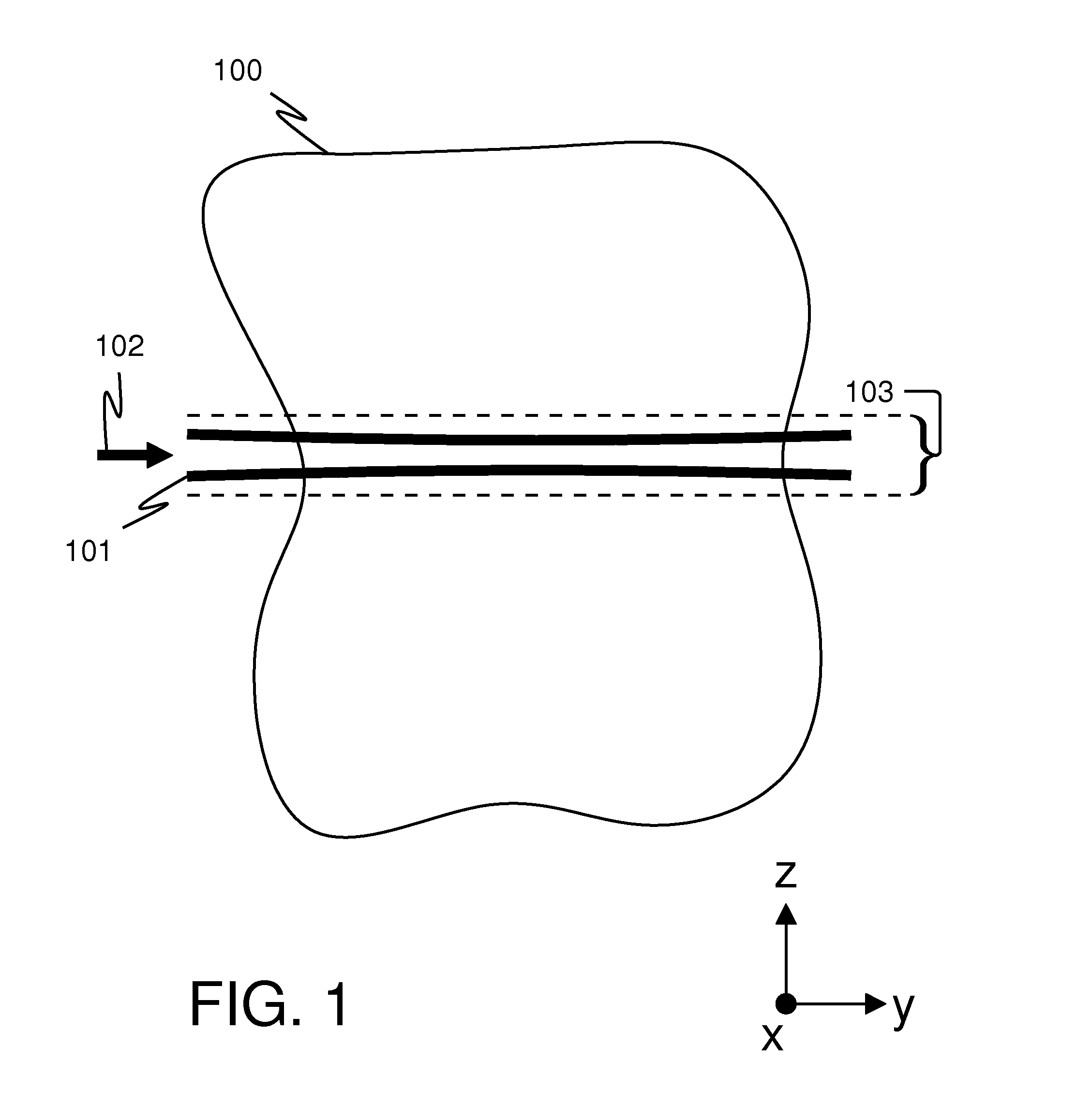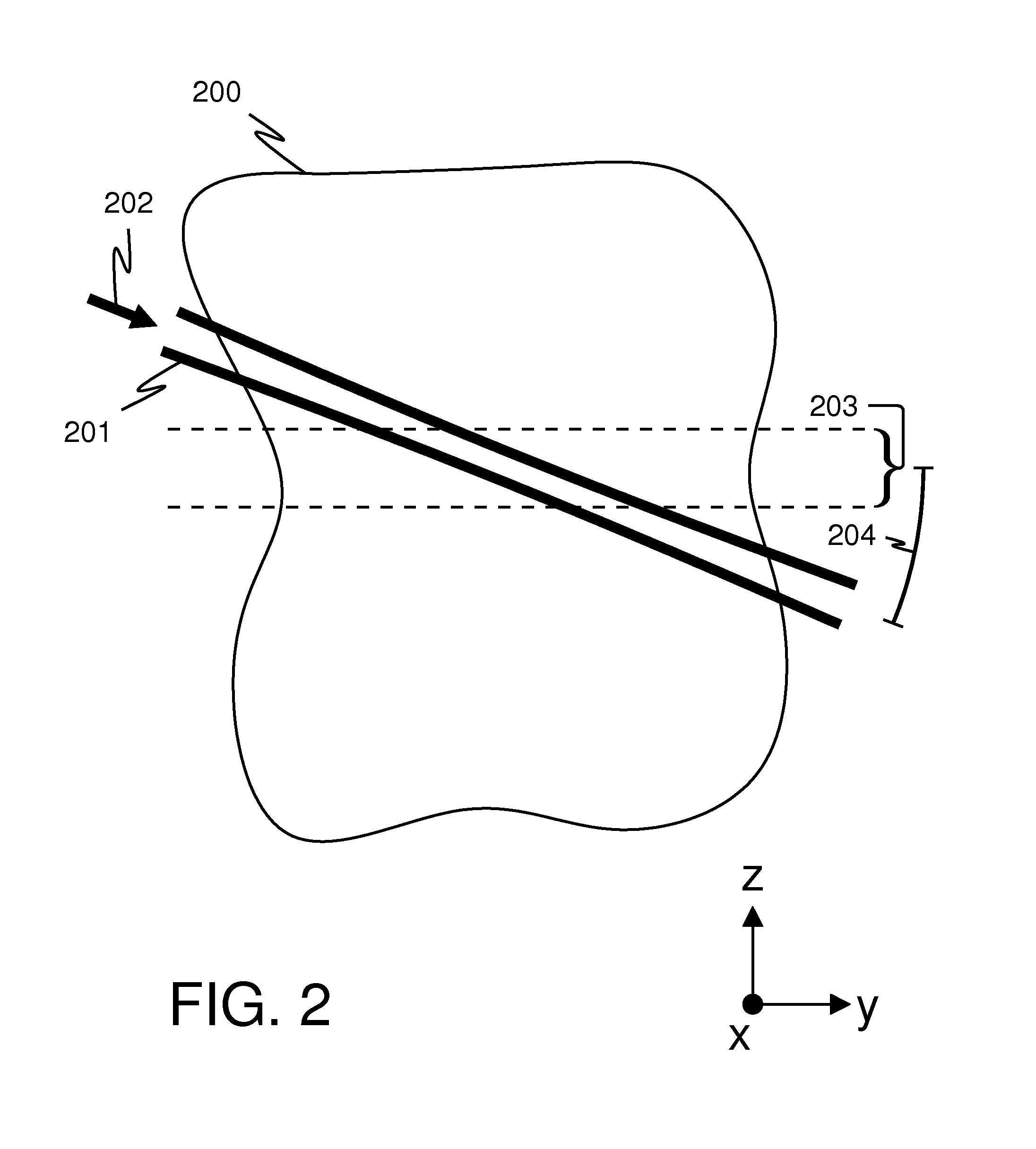Lightsheet microscopy with rotational-shear interferometry
- Summary
- Abstract
- Description
- Claims
- Application Information
AI Technical Summary
Benefits of technology
Problems solved by technology
Method used
Image
Examples
Embodiment Construction
[0036]Turning now to the figures, FIG. 1 schematically illustrates the concept of lightsheet microscopy. FIG. 1 illustrates part of a lightsheet microscope representing a snapshot at one scan step of a sample 100 under study. Sample 100 could be a biological specimen, for example. Sample 100 is three-dimensional and extends in the “+ / −x”, “+ / −y”, and “+ / −z” directions. (Mutually orthogonal coordinate axes indicate the “x”, “y”, and “z” directions, with each arrow on each coordinate axis pointing in the positive direction along the axis. For example, the “+y” direction is to the right on the page.) For simplicity of illustration, only a two-dimensional slice of sample 100 is drawn.
[0037]Lightsheet 101 enters sample 100 in the direction indicated by arrow 102 and represented by a pair of thick lines. The lightsheet 101 is parallel to the x-y plane and has a slight curvature, customary of the behavior of a Gaussian beam. A Gaussian beam is one form of illumination used to generate a li...
PUM
 Login to View More
Login to View More Abstract
Description
Claims
Application Information
 Login to View More
Login to View More - R&D
- Intellectual Property
- Life Sciences
- Materials
- Tech Scout
- Unparalleled Data Quality
- Higher Quality Content
- 60% Fewer Hallucinations
Browse by: Latest US Patents, China's latest patents, Technical Efficacy Thesaurus, Application Domain, Technology Topic, Popular Technical Reports.
© 2025 PatSnap. All rights reserved.Legal|Privacy policy|Modern Slavery Act Transparency Statement|Sitemap|About US| Contact US: help@patsnap.com



